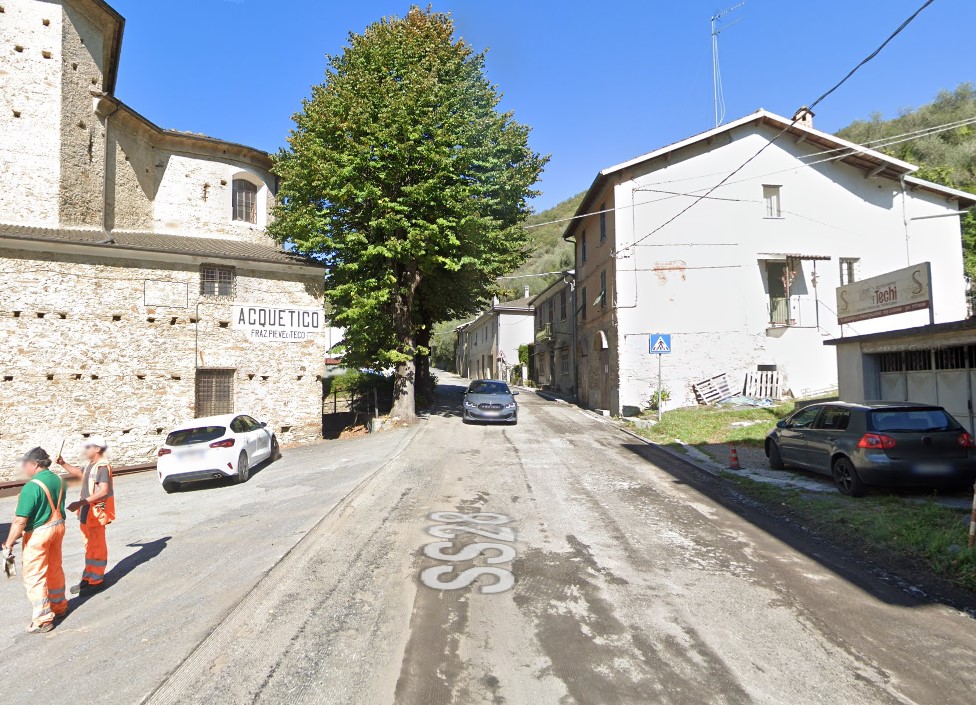That’s a Lot of Speeding Tickets

The Italian village of Acquetico sits in the region of Liguria (here’s a map), but Acquetico is easy to miss. It’s so tiny that it doesn’t have its own Wikipedia entry; it’s mentioned briefly in the sidebar of the entry for Pieve di Teco, the municipality that Acquetico is part of. Only about 120 people live in Acquetico, and there are only a half-dozen or so streets. One major road — Strada Statale 28 (SS28) — runs through it, as seen above. Here’s a map that shows the road, and as you can see, there’s not much there.
And yet, that road may be worth millions of Euros. Because people love to fly through it, apparently.
Liguria is situated between Piedmont, the region at the base of the Alps, and the coast of the Mediterranean Sea. If you want to go between those two places — and many people do, and often — you’ll typically need to travel through Liguria. As one would expect, there are highways in Liguria to facilitate that travel; the A6 is the most obvious route. But that road (and the A10 if you’re travelling along the coast) aren’t the only way to go from A to B. SS28 is a good alternative route, as Pieve di Teco Mayor Alessandro Alessandri explained to local media (as relayed by the BBC) in 2018: “With three main routes connecting the neighboring Piedmont region to Italy’s northern coast, the route through Acquetico remains the best for those looking to avoid speed bumps, speed radar, or tolls.” On top of that, SS28 is more scenic and for many, more fun. Per the mayor, “there are the motorcyclists, who use the ‘ideal asphalt, good width, [and] continuous bends’ to stage races between larger towns on the road.”
And that would be fine, except for the fact that these drivers — the motorcyclists most obviously — weren’t typically abiding by the local speed limit. Per NPR, that was set at a hardly slow 50 km/h (about 30 miles per hour), but drivers were often whipping through at much higher speeds, and in extreme cases, more than twice that. So Alessandri installed a speed camera, in hopes of getting people to slow down.
That’s no big deal — speed cameras are hardly new, and they’re used by municipalities near and far. But Acquetico’s speeding problem was worse than anyone had expected. In 15 days, the camera caught 58,568 motorists speeding through the tiny village. That’s about one speeding ticket every 20 seconds, and again, in a village of only 120 residents. That number is so wildly out of proportion to Acquetico’s population that it feels like a typo.
But it wasn’t. The speed camera was only originally installed as a trial, and Mayor Alessandri stressed that he wasn’t trying to turn Acquetico into a money-making speed trap — so we don’t know how many tickets were issued and at what amounts. But doing some back of the envelope math, the speed camera could have easily generated about €2.5 million (just under $3 million) over the 15-day period — that’s about $1,500 per Acquetico resident per day. Unsurprisingly, the mayor told the press that he was leaning toward making the camera a permanent installation.
Bonus fact: Most people think twice about speeding after getting a ticket, but that didn’t happen when Heimo Wallner got flagged in 2018 — 42 times over roughly 50 days. It wasn’t entirely his fault, though. As the BBC reported, “He told Austrian media he could not see signs for the 30km/h (18.5mph) limit on that stretch of road in the dark – and drove at the standard 50km/h (31mph). It took more than a month for the first penalty to arrive – by which time he had clocked up dozens more.” The total fines came to €3,000 (about $3,500), and Wallner paid the fines without objection.
From the Archives: Slow and Steady Wins the Lottery: The reverse-speed trap?
